Archives: expositions
les expositions
Gabetti and Isola – Another modernism
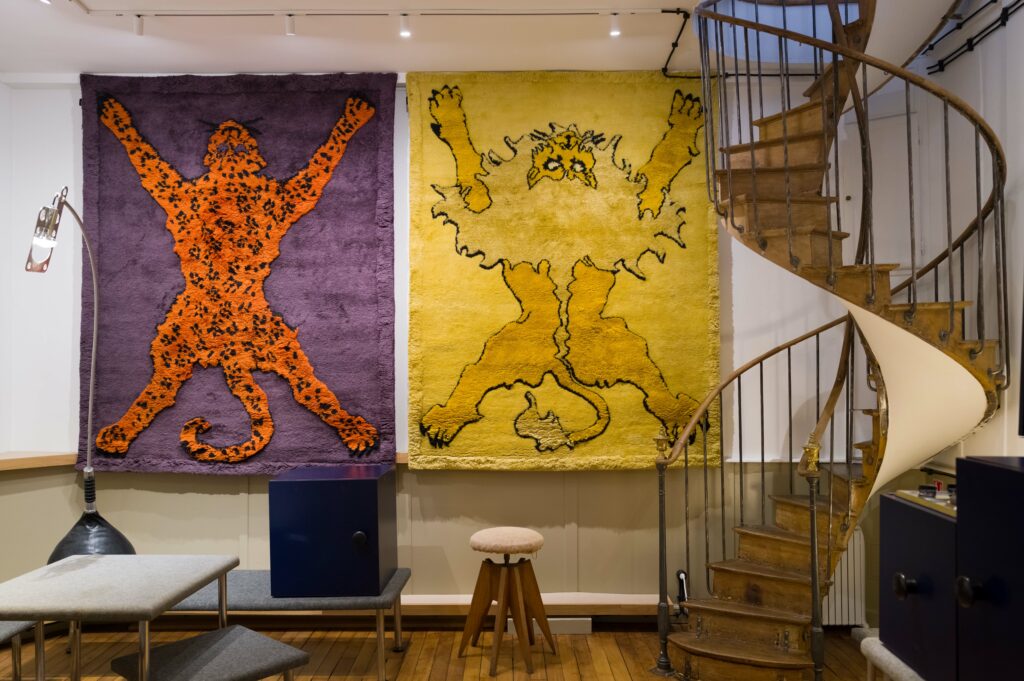


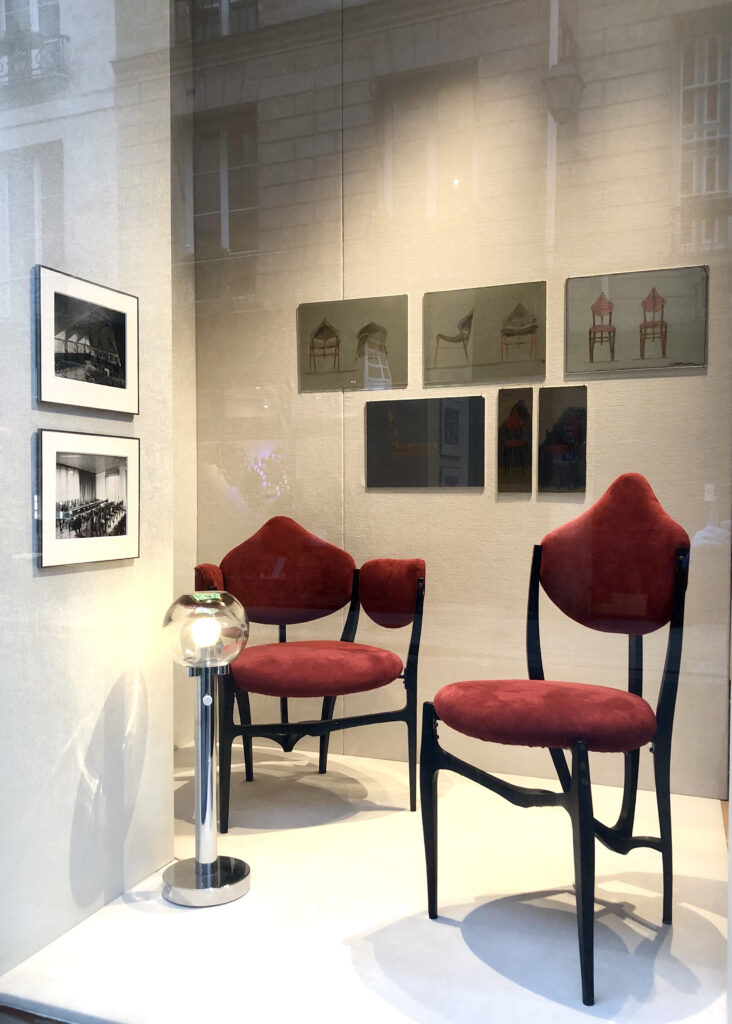
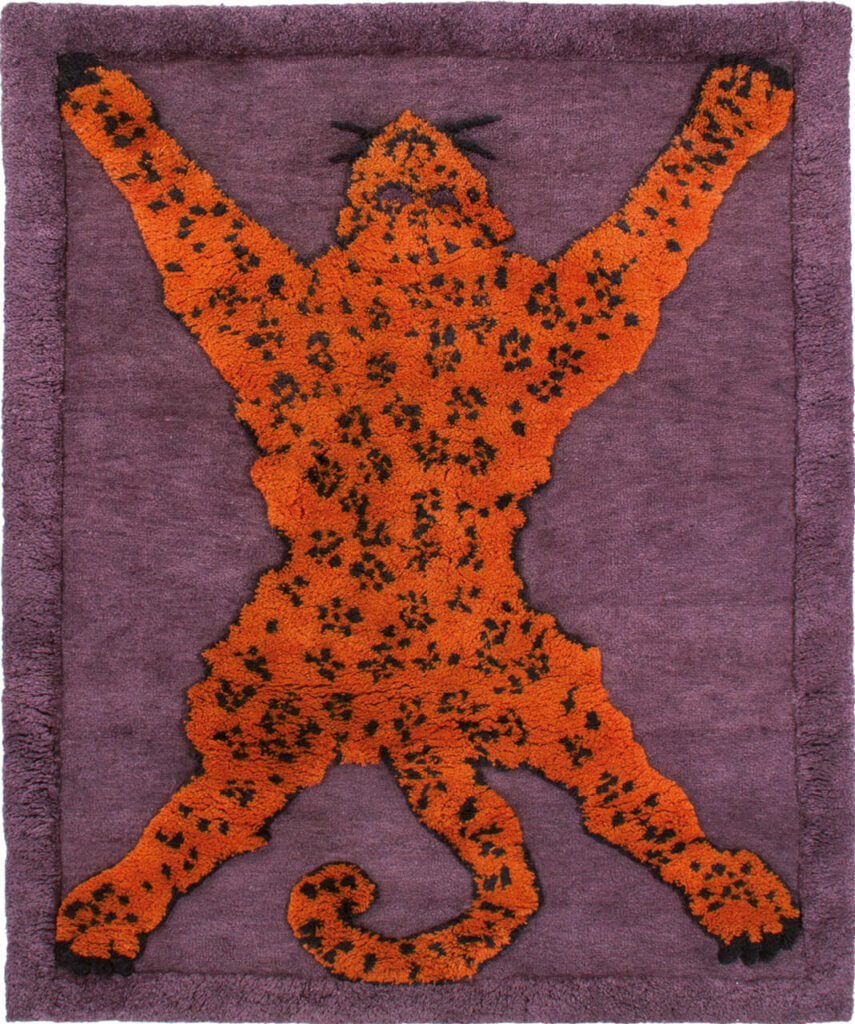
For our first exhibition of 2024, we are delighted to present a rare and previously unseen collection of furniture and drawings by the Turin-based architecture and design duo Gabetti and Isola.
Challenging the precepts of modernism and international style, Roberto Gabetti (1925-2000) and Aimaro Isola (1928-) set themselves apart in the early 1950s with an original vision of the avant-garde rooted in Italian architectural tradition and the art nouveau style. Seeking a harmonious dialogue between the building and its urban context, their style is characterized by pure lines, daring geometric shapes, ornamentations and the combined use of modern and traditional materials. Although the two men later borrowed certain features from the techno aesthetic, they nevertheless continued to attach fundamental importance to the landscape value of their projects, ensuring that each building was at one with its natural surroundings, using materials such as wood and stone.
Their most notable works include the Borsa Valori (Turin, 1956), and the housing and furnishings of the Talponia complex (Ivrea, 1971), designed for the Olivetti residential center in Ivrea, which is now a UNESCO World Heritage site.
The first major exhibition devoted to Gabetti and Isola in France since their retrospective at the Institut Français d’Architecture in 1996, Gabetti and Isola – Another modernism focuses on these two emblematic buildings through an exceptional selection of their respective furniture. Roberto Gabetti and Aimaro Isola conceived their projects as total works, designing furniture, lamps and carpets as an extension of their architectural principles. Renowned for their originality, their creations have been included in the collections of the MoMA in New York, the Centre Pompidou in Paris and Maxxi in Rome. Abraham & Wolff will also be showing a never-before-seen series of preparatory sketches and technical drawings by Aimaro Isola that illustrate the development of these pieces.
Jocelyn Wolff and Samy Abraham would like to extend their warmest thanks to Aimaro Isola and his son Hilario, who opened up the resources of their archives, reserves and memories to us in preparation for this exhibition.
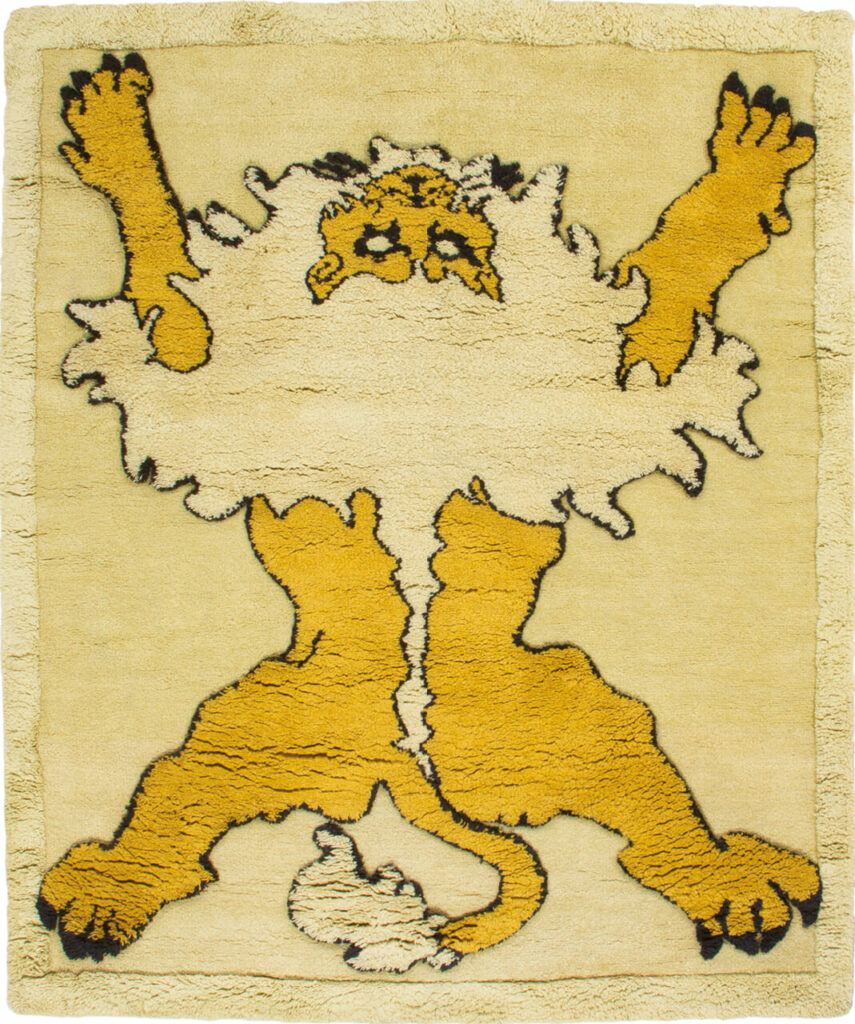

Anastasi, Bianchi, Bock, Botella, Boucher Morales, Brunschwig, Cahn, Lamiel, Melsheimer, Nemours, Oberhuber, Perdrix, Prinz Gholam, Tropa, Venini and four angels.
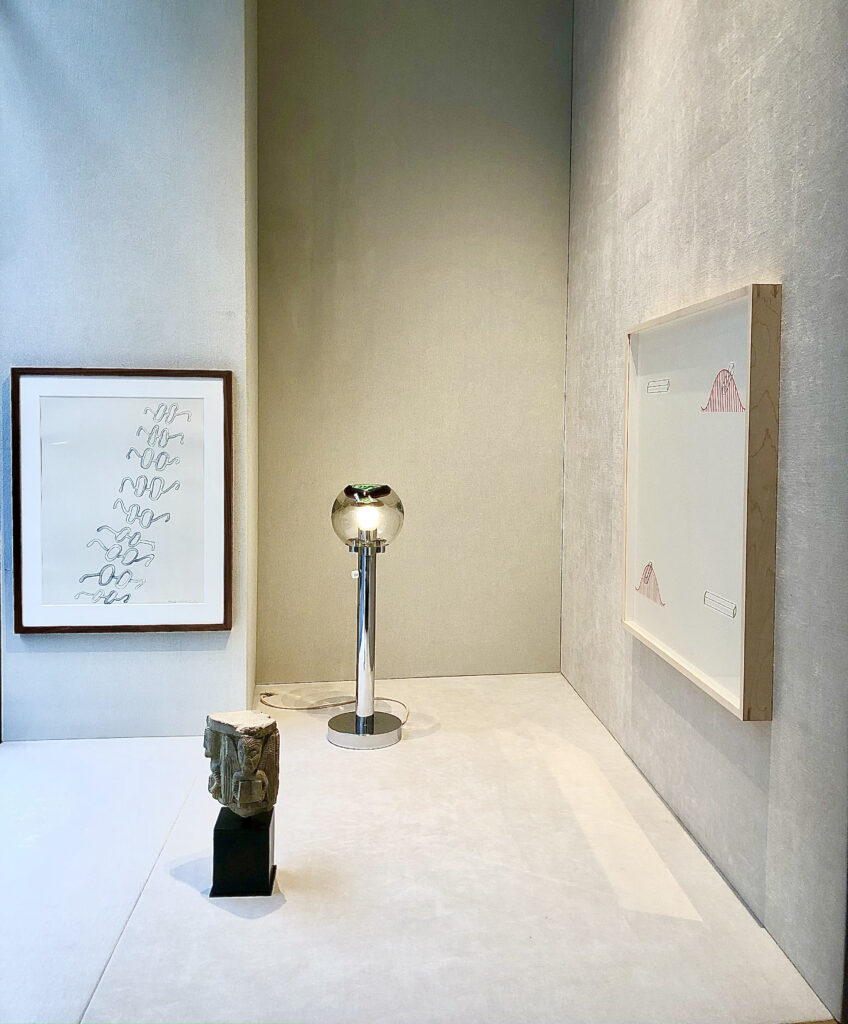
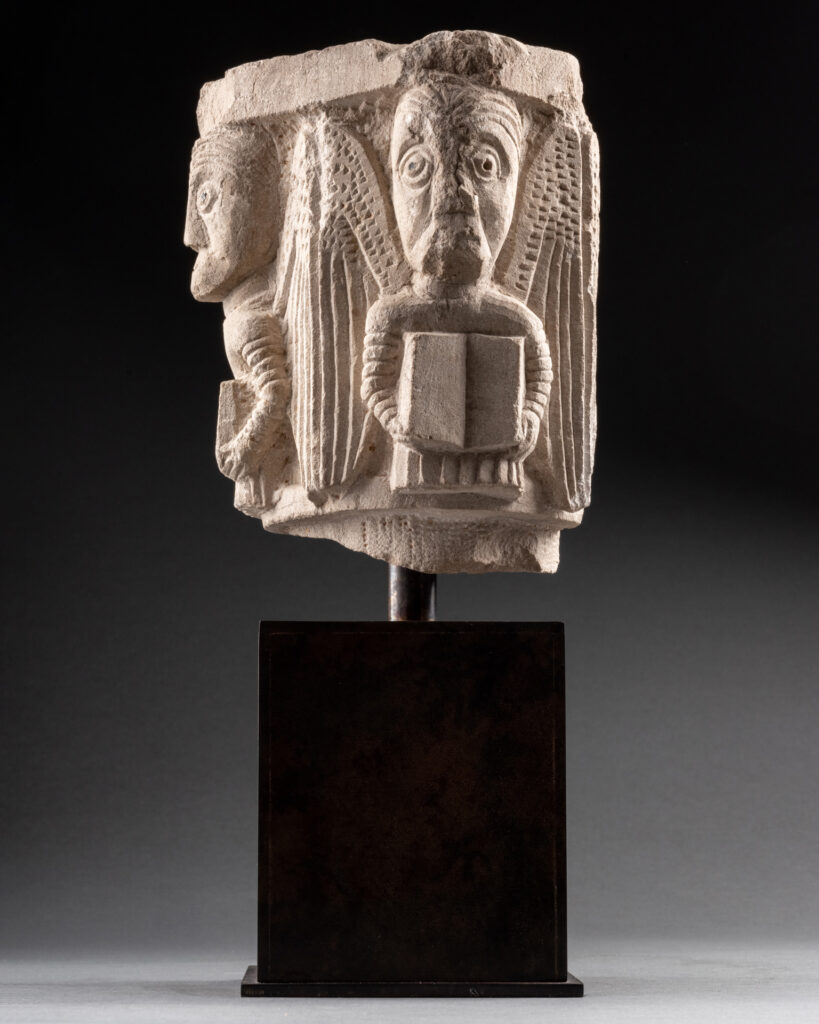
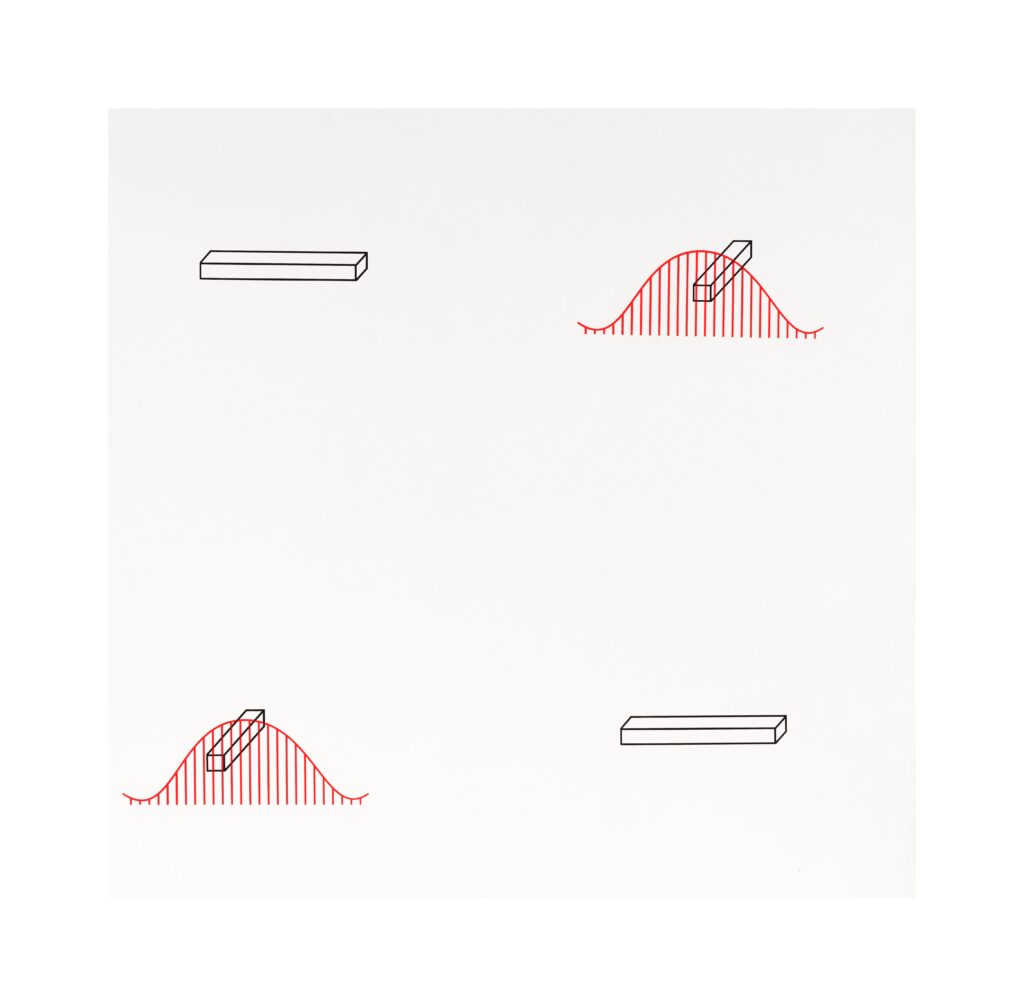
For this new exhibition, Abraham & Wolff is proposing an evolving display in the form of a retrospective. A constantly renewed dialogue between the artists who have marked our first year of programming.
Including contemporary sculptures and drawings, editions, multiples and Italian design, this selection of works by William Anastasi, Diego Bianchi, Bruno Botella, Mélissa Boucher Morales, Colette Brunschwig, Miriam Cahn, Aurelie Nemours, Oswald Oberhuber, Jean-Marie Perdrix, Prinz Gholam, Francisco Tropa and Venini is accompanied by an exceptional late 11th-century Romanesque capital from the Alexandre Piatti Gallery in Paris
We would also like to take this opportunity to thank the galleries who made many of our projects possible : Compasso Gallery in Milan, Gallery Marcelle Alix in Paris and KOW Gallery in Berlin.
Mélissa Boucher Morales – Scrolling [faire défiler]
![Mélissa Boucher Morales, Scrolling [faire défiler], 2021-2022, silver photography, inkjet prints and dielectric glass Black and white silver photograph under dielectric glass by Mélissa Boucher representing an open mouth](https://www.abraham-wolff.com/wp-content/uploads/2023/11/Scrolling-MB_-6-1-726x1024.jpg)
![Mélissa Boucher Morales, Scrolling [faire défiler], 2021-2022, silver photography, inkjet prints and dielectric glass Black and white silver photograph under dielectric glass by Mélissa Boucher representing feet](https://www.abraham-wolff.com/wp-content/uploads/2023/11/faire-defiler-BD_7-1-721x1024.jpg)
![Mélissa Boucher Morales, Scrolling [faire défiler], 2021-2022, silver photography, inkjet prints and dielectric glass Black and white silver photograph under dielectric glass by Mélissa Boucher representing a closed eye](https://www.abraham-wolff.com/wp-content/uploads/2023/11/Scrolling-MB_-2-1-1024x683.jpg)
Mélissa Boucher Morales develops photographic projects, videos and artist’s editions in which she explores the possibilities and limits of the image, its process of appearance and disappearance, through forms and notions linked to the representation of the intimate. As part of this research, the Scrolling project (2021-2022) was born of the artist’s reflection on the production of images and their alteration, but also of a desire to create an alternative reading to the fascination exerted by pornographic content. Using film to photograph streaming videos of amateur cam girls, postporn and feminist pornography, the artist has captured intimate gestures and isolated fragments of bodies, gestures and attitudes that would otherwise have been lost in the flow. From these details, these images hidden within the image, the artist brings out a new sensuality. She subjects them to a specific film treatment that gives the models a spectral appearance (in contrast to the flesh brutally exposed by the camera), then superimposes a dielectric pane – a glass whose reflective qualities seem to send the viewer back to his or her role as voyeur – a new screen through which she reappropriates not only the image but also the initial viewing device.
To coincide with the PhotoSaintGermain festival, which runs from 2 to 25 November 2023, Abraham & Wolff is pleased to honour the work of Mélissa Boucher Morales by exhibiting a selection of works from Scrolling [faire défiler].
Natura Pictrix, tribute to Roger Caillois
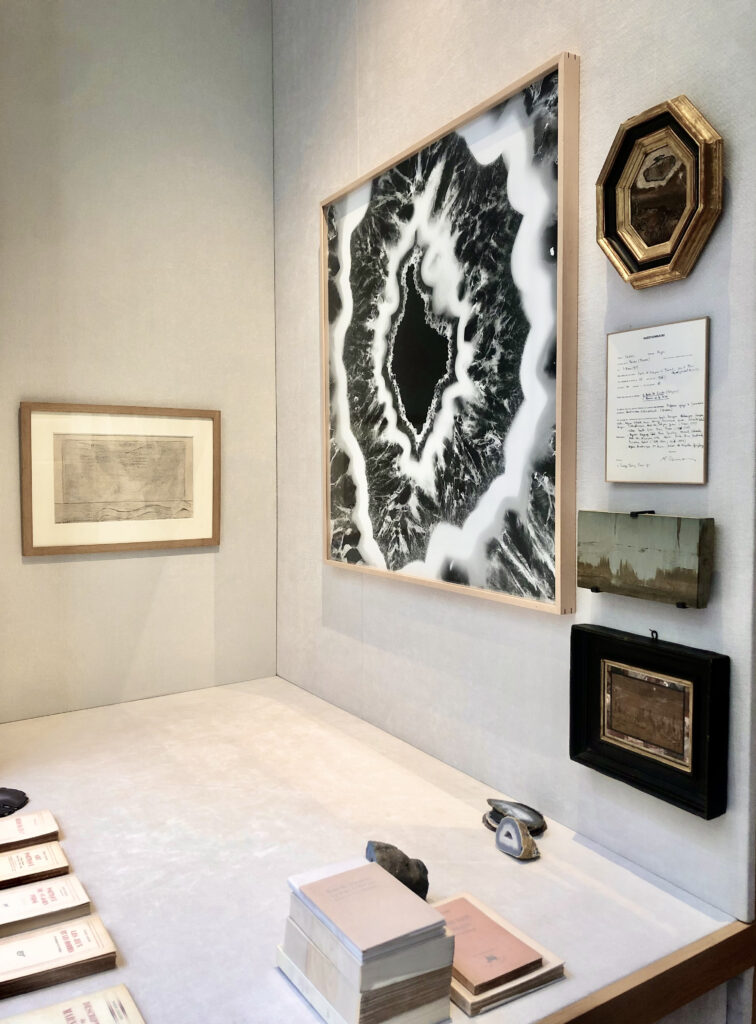

![Anonymous, [3 figures painted on a paesina plaque], oil on paesina plaque, 14.5 x 27.5 x 4 cm framed Anonymous oil painting on a paesine plaque depicting a woman and a man walking in a rocky landscape](https://www.abraham-wolff.com/wp-content/uploads/2023/10/L1009188-2-1024x683.jpg)
![Anonymous, [Spanish oil on travertine representing Madonna and Children], circa XVIIth, oil on travertine, 21 x 16 x 0,8 cm 17th-century oil painting on travertine attributed to an anonymous Spanish artist, depicting the Virgin Mary and the Christ Child](https://www.abraham-wolff.com/wp-content/uploads/2023/10/L1009200-2-842x1024.jpg)
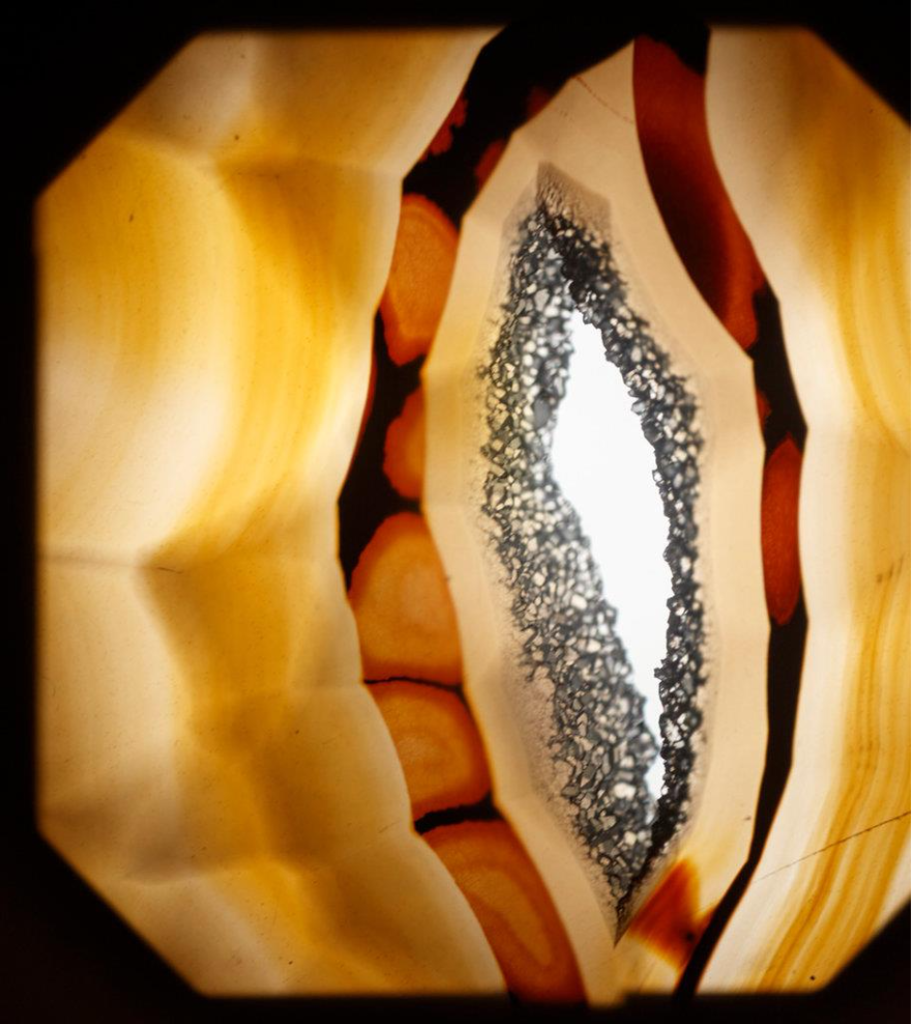
Writer, thinker and collector Roger Caillois (1913-1978) was one of the most original figures in twentieth-century French intellectual life. In the course of a rich and eventful career, Caillois was in turn close to the Grand Jeu and then the Surrealists, founder of the Collège de Sociologie alongside Georges Bataille and Michel Leiris, director of a literary magazine in Argentina, editor and translator promoting South American literature in France (he revealed Jorge Luis Borges), then a civil servant at UNESCO and finally a member of the Académie Française.
Working at the crossroads of multiple disciplines, his prolific work includes over thirty books on subjects as diverse as religious mantes, myths, the sacred, games, dreams, mimicry, war, and stones. This seemingly disparate corpus finds its coherence in a major idea that obsessed Caillois: the unity of the world. In his view, nature is woven from a single fabric that manifests itself in hidden analogies between natural phenomena. Identifying and classifying all the analogies that unite the different kingdoms of nature would reveal the poetic structure of the world.
It was when he drew a similar connection between the metallic moiré of a mineral, labradorite, and the iridescence of the wings of a butterfly, morpho, that Caillois began to take an interest in stones. From a simple subject of study and curiosity, they soon became a true obsession. Fascinated by the evocative power of certain specimens, in which the imagination believes it recognises the more or less faithful representation of real objects, Caillois began to collect the strangest, most graphic minerals, the most fertile in simulacra and symbols, building up a large collection, the finest pieces of which are now on display in Paris museums.
Although he was wary of the charms of the fine arts and literature, he never tired of contemplating his imagery stones. “I prefer their drawings to the paintings of painters, their forms to the sculptures of sculptors, so much so that they seem to me the works of an artist less deserving but more infallible than them”. (in Pierres, Gallimard, 1966) The deciphering of stones thus inspired one of his great ideas. Although we cannot equate minerals with works of art as such, i.e. with deliberate creations, it nevertheless seems that nature can sometimes merit the title of artist and stones that of natural works of art. Natura pictrix, nature as painter, as Caillois called it (in Méduse et Cie, Gallimard, 1960), is a formidable competitor to artists, having boldly preceded their discoveries of yesterday and today.
This original reflection owes much to Caillois’s oft-repeated study of one stone in particular: paesine. Paesine is a microcrystalline limestone found in Tuscany, in the Florence region. After cutting and polishing, these stones reveal patterns that disturbingly suggest a whole range of landscapes: towns and villages with ruined buildings, panoramas of skyscrapers, cliffs on the coast, sea caves, raging seas, tormented skies and so on. Hence the name “landscape marble” or “marble-ruin”.
Paesines were very popular in the 16th and 17th centuries. Highly sought-after, they adorned the curiosity cabinets of the Medicis, Gustavus-Adolphus of Sweden and Rudolf II of Habsburg. They were used in the composition of sumptuous stone marquetry. The most striking of them were even framed to give them the status of real paintings. Natural paintings whose aesthetic value, not to say artistic, the artists themselves recognized, to the point of sometimes swapping the canvas for the mineral.
Doubtless with the help of stone-cutters, they chose the paesine, jasper, marble or lapis lazuli whose colours and veins best lent themselves to their imagination, and populated them with figures, trees, animals and objects. Painters such as Sebastiano del Piombo (1485-1547), Antoine Carrache (1583-1618), Johann König (1586-1642) and Mathieu Dubus (1590-1665) thus took advantage of the natural settings available to them to compose religious and mythological scenes in which art and nature converse and merge.
Natura Pictrix pays tribute to Caillois as an original thinker and a great collector, as well as to the tradition of stone painting that he so effectively brought to light. The exhibition brings together a selection of anonymous painted stones dating from the 17th century, some exceptional paesines, and a frottage by Max Ernst that once belonged to Caillois. It is also an opportunity for historical creation to meet contemporary art, with previously unseen works by the sculptor Francisco Tropa, for whom agate blades occupy a special place.
Prinz Gholam – There are Eyes
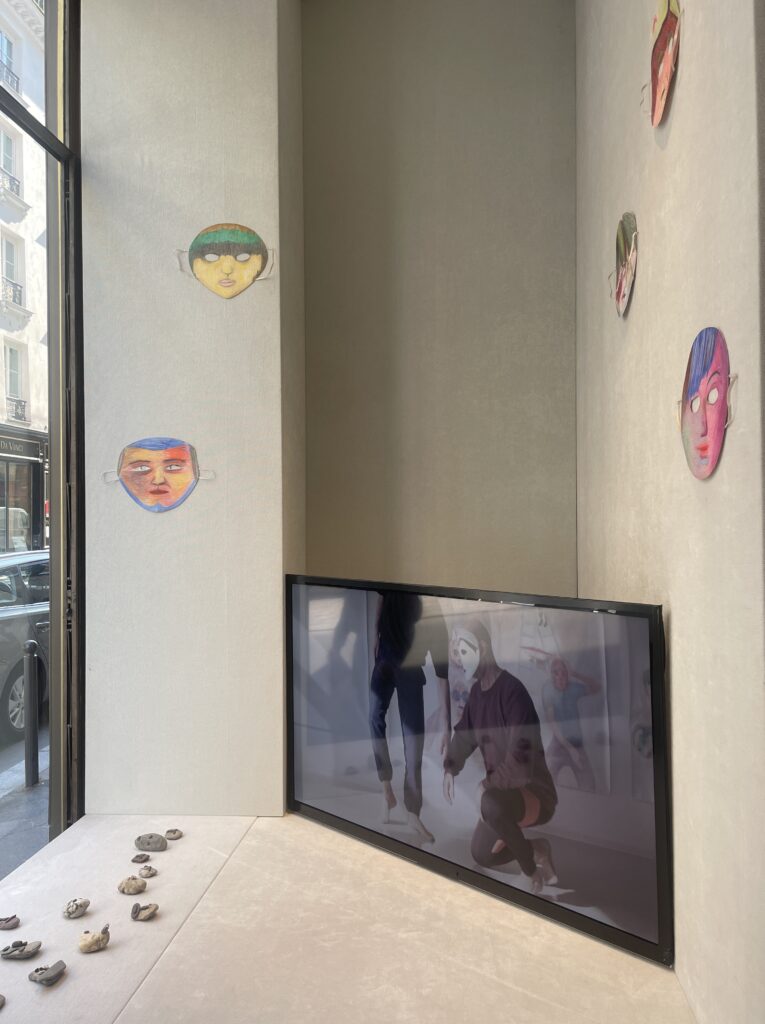
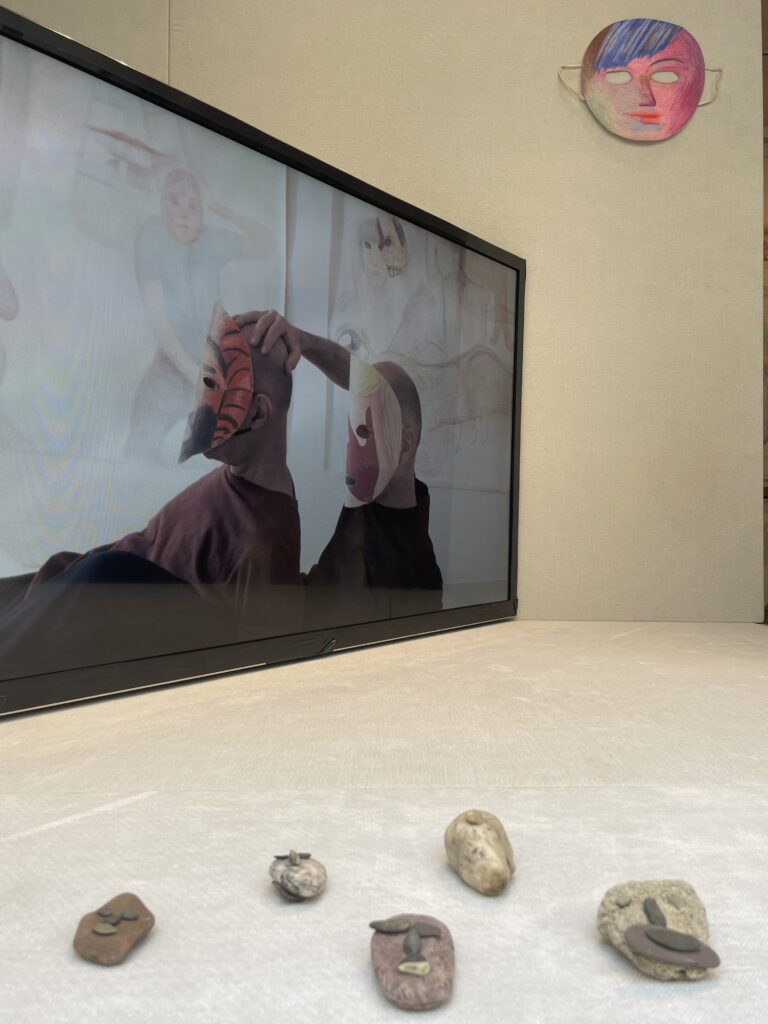
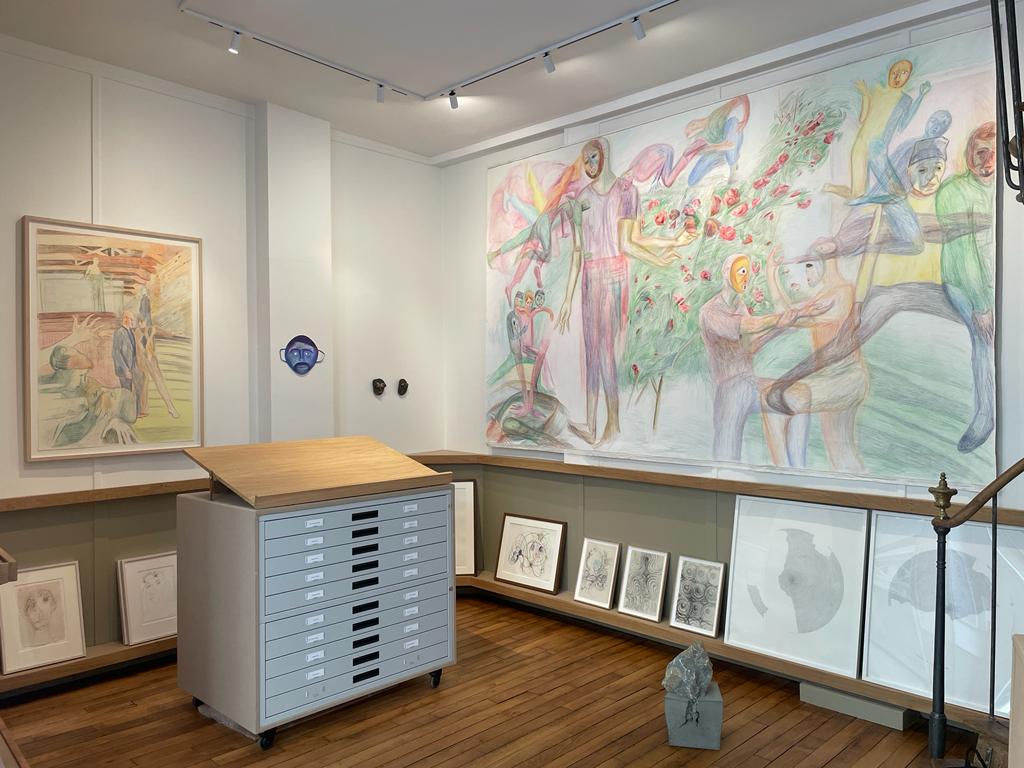

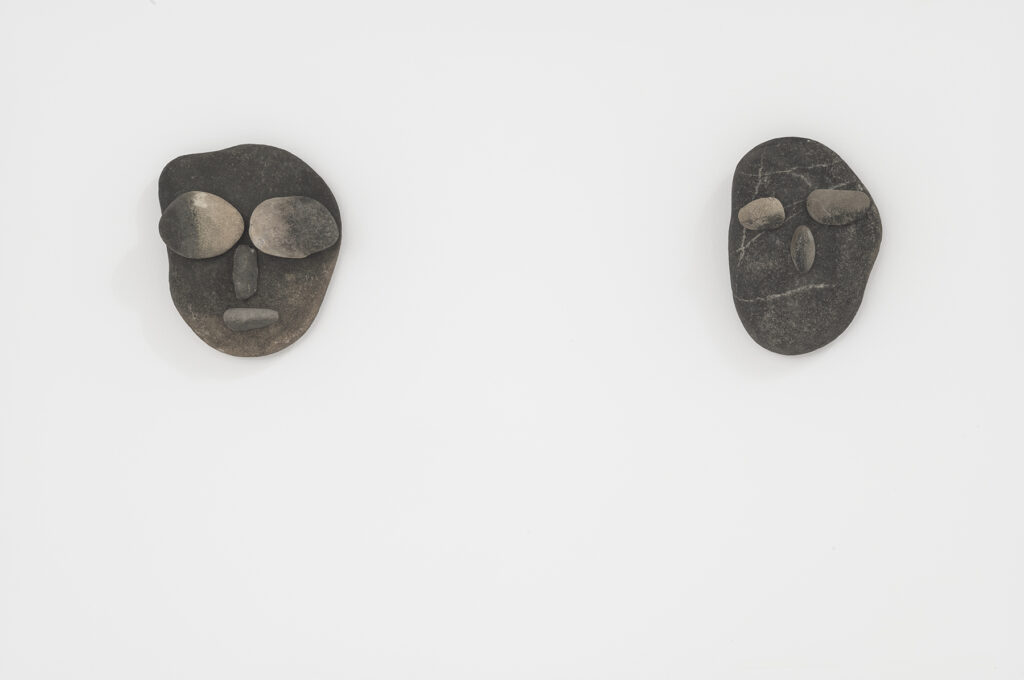
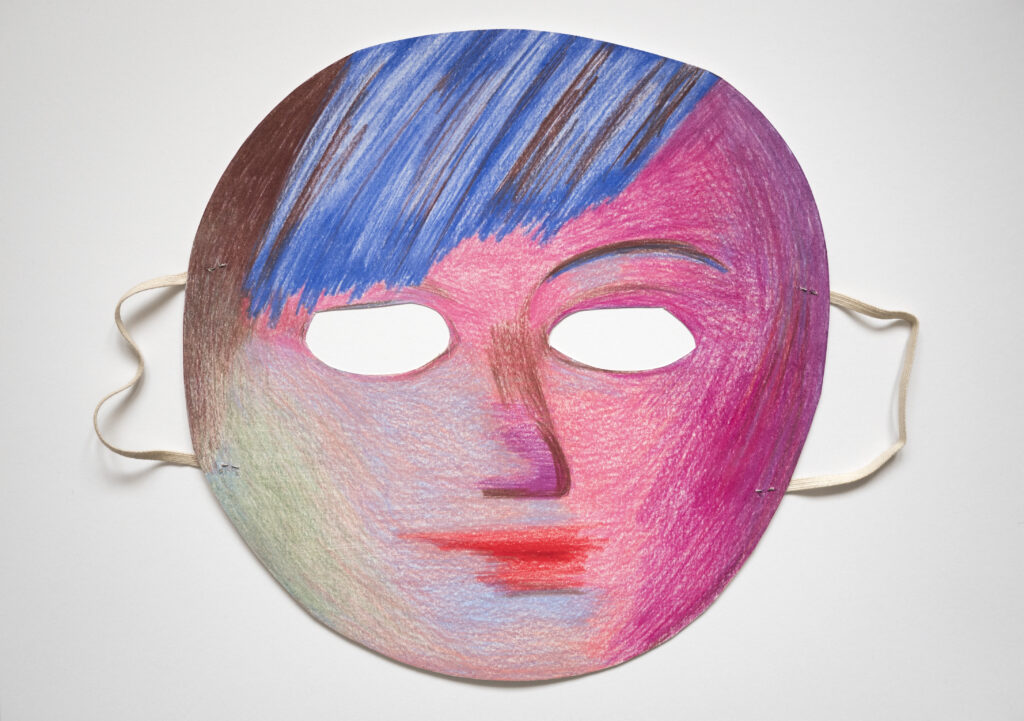
Formed by Wolgang Prinz (born in 1969) and Michel Gholam (born in 1963), the Prinz Gholam duo has developed a performance practice over the last 20 years in which the two artists use their bodies to reinterpret a wide range of cultural references, from ancient painting to sculpture, contemporary art, cinema and media images. The two men internalise and embody these cultural stereotypes through precise choreographies in which they execute a succession of carefully chosen poses, moving like living sculptures.
Slow and fluid, giving a sense of the passage of time, their gestures make no attempt to approach the aestheticism of a danced choreography. In their alternation between movement and pose, the bodies of the two artists become less the vehicle of an emotion than of a story, that of the representation of the body. By reinterpreting the images that make up this story, the duo show how our bodies and gestures – and with them our identity – are shaped by the assimilation of a dominant cultural canon.
Each of Prinz Gholam’s performances is accompanied by an intense process of creating visual material and performative elements (videos, photographs, objects, installations), in which the practice of drawing now occupies an important place. The two artists see drawing as a field of experimentation in which they can spontaneously imagine and project the gestures, postures and props that will form part of their choreography, and the way in which they will relate to each other. Using large-format coloured pencil drawings, they create a multitude of figures, some of which evolve in a representation of the very space in which the performance will take place. It’s a constellation of bodies at liberty, announcing the tone of the performance and foreshadowing, through the images, the process of reinterpreting history.
For this new exhibition entitled There are Eyes, Abraham & Wolff is pleased to present large-scale drawings made for two performances, L’esprit de notre temps (Mattatoio, Rome, 2021) and Similitude (Punta della Dogana, Venice, 2018), as well as a series of paper masks and faces made from stone assemblages that bear witness to their multidisciplinary practice. Masks, historically and symbolically charged objects, have recently appeared in Prinz Gholam’s work, accentuating the hieratic and theatrical nature of their choreographies while at the same time deepening their reflection on identity. This research seems to be echoed by the groups of faces that the artists have been making using stone gleaned from the four corners of the world over the last few years. The video projection of several extracts from these performances gives visitors an insight into the complex relationship between these different elements.
Katinka Bock
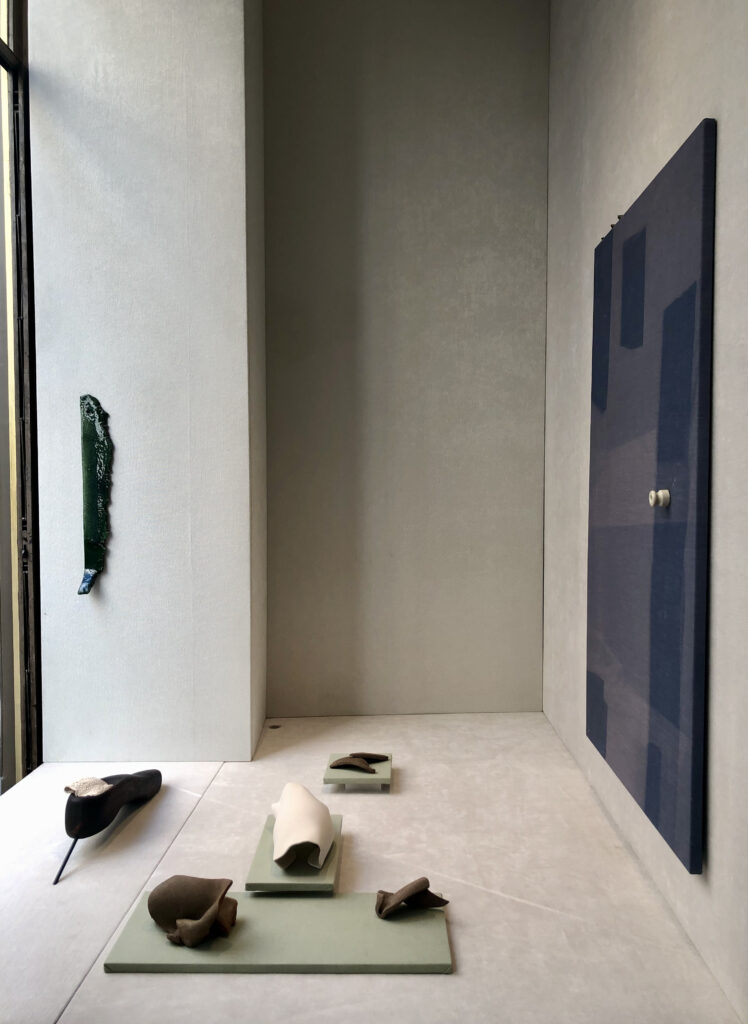
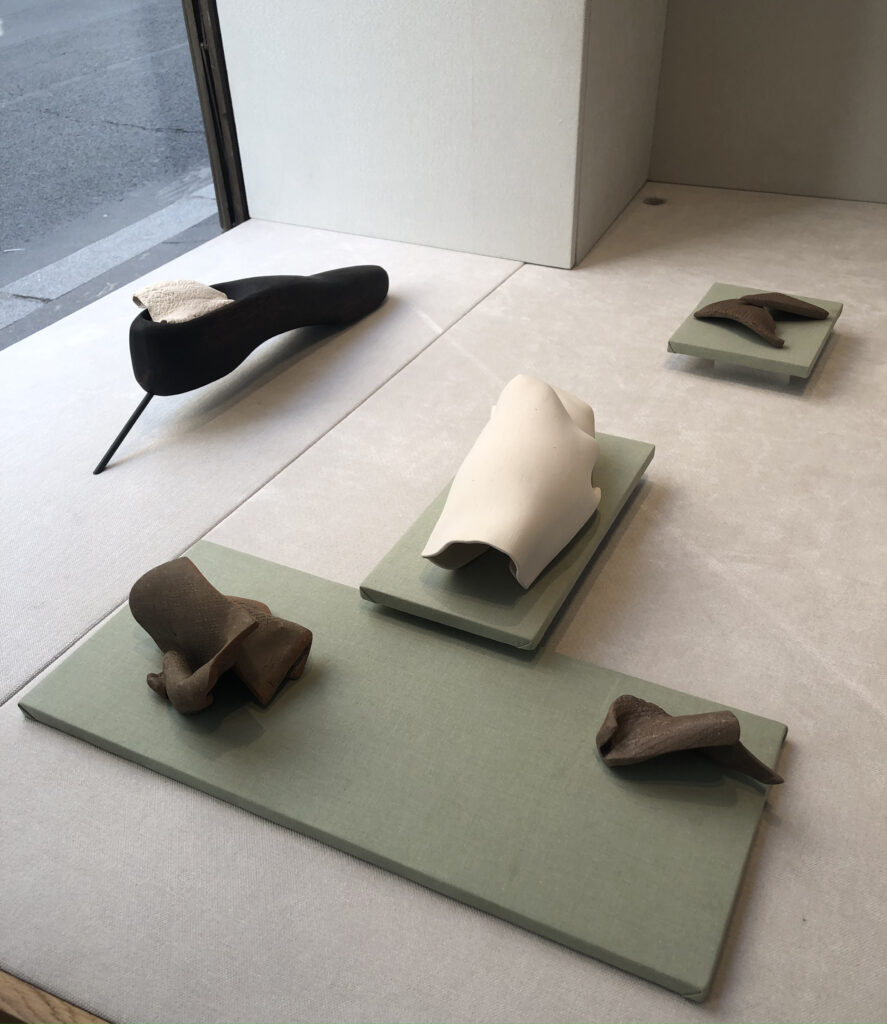
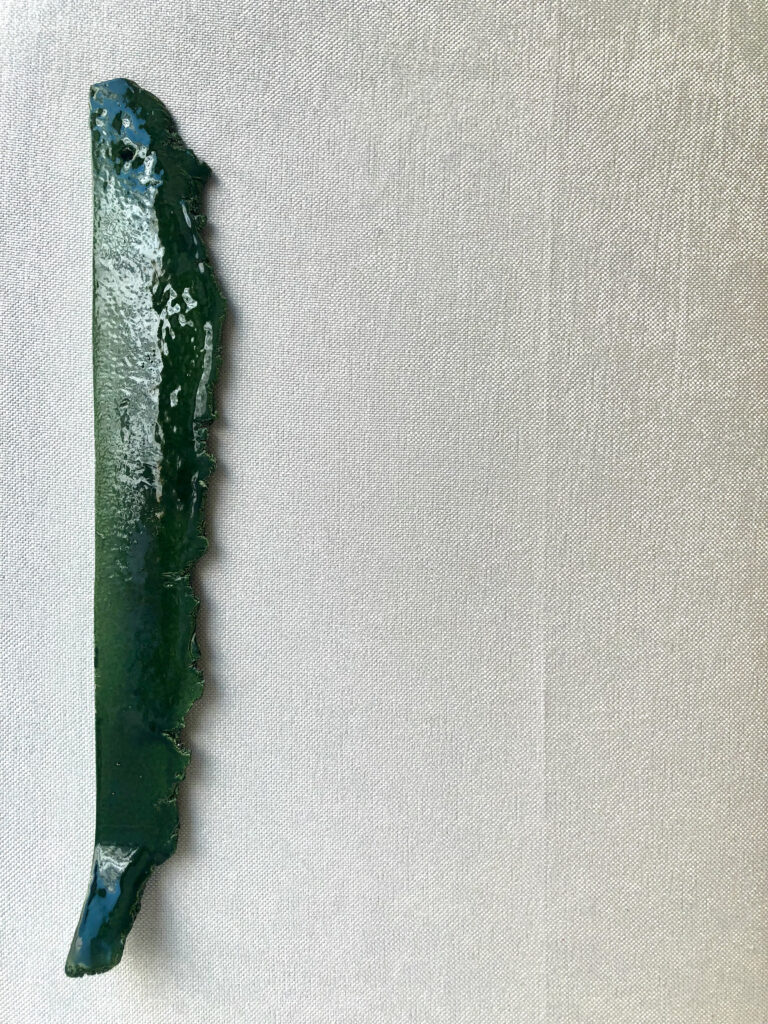
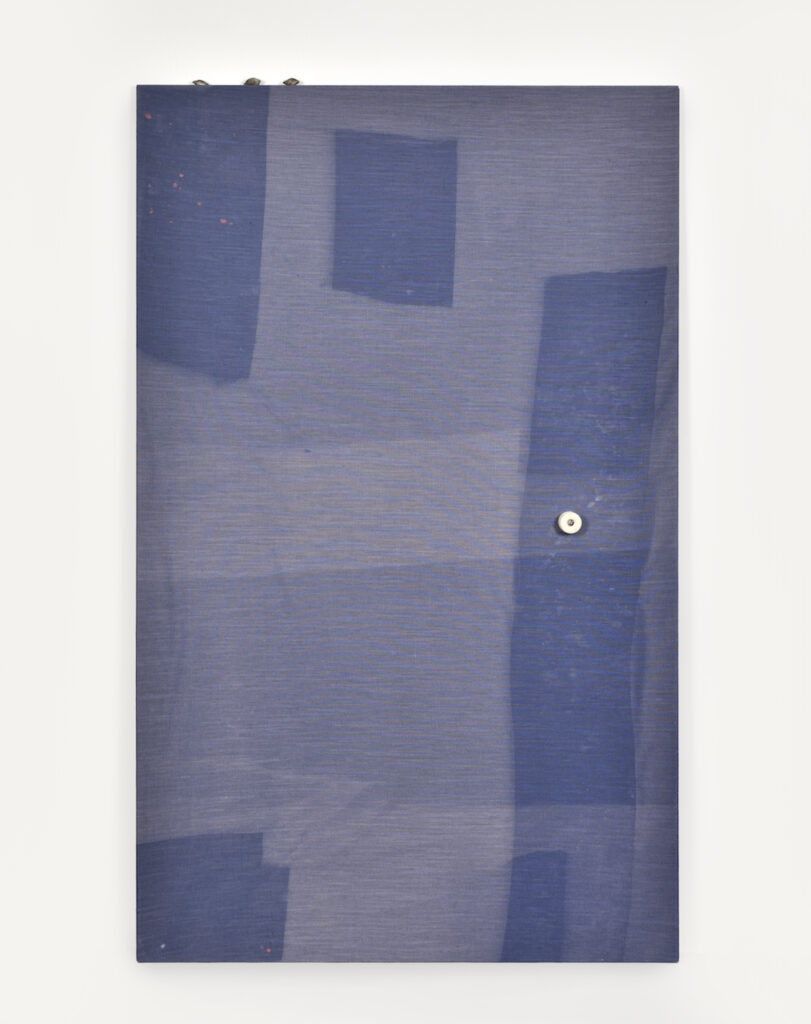

Abraham & Wolff is delighted to dedicate this new exhibition to the work of Katinka Bock. For the occasion, the artist has entrusted us with a selection of pieces straight from her studio, including monotypes and small sculptures. They are shown in a scenography that she has specially designed for our space.
This new ensemble captures the essence of the key gestures and themes that characterise the artist’s practice. Three sculptures in brown clay marked by an imprint reminiscent of scales bear witness not only to Katinka Bock’s interest in folded and creased forms, but also to the particular attention she pays to traces, a recurring motif that runs through her sculptural work as well as her photographs and monotypes. I’m your man, a green glazed ceramic piece designed to emphasise the boundary of the wall on which it is hung, is part of the artist’s research into the notions of border and threshold, understood as places of communication between the inside and outside of the spaces in which her works are exhibited. Another important source of reflection, the exploration of separation and the link between bodies, seems to inspire a piece composed of two interlocking white ceramics entitled Pavillon (Reunification). Particularly sensitive to issues of space and time, Katinka Bock sometimes exposes some of her creations to natural processes of alteration, allowing time and the external environment to affect the work, as with this blue canvas fixed to a stretcher after having been insolated in certain places. On the upper edge of the stretcher are three bronze replicas of apricot pits, reminiscent of other casts of real objects made by the artist: fish, cacti and cherry pits.
Katinka Bock, Bruno Botella, Miriam Cahn
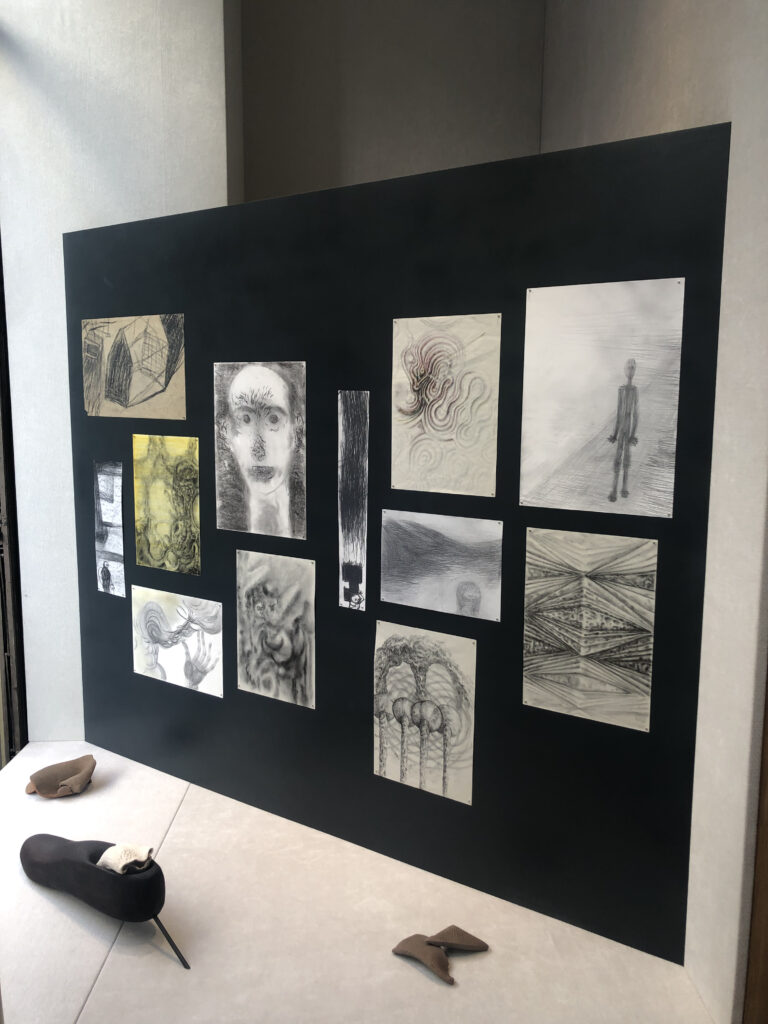
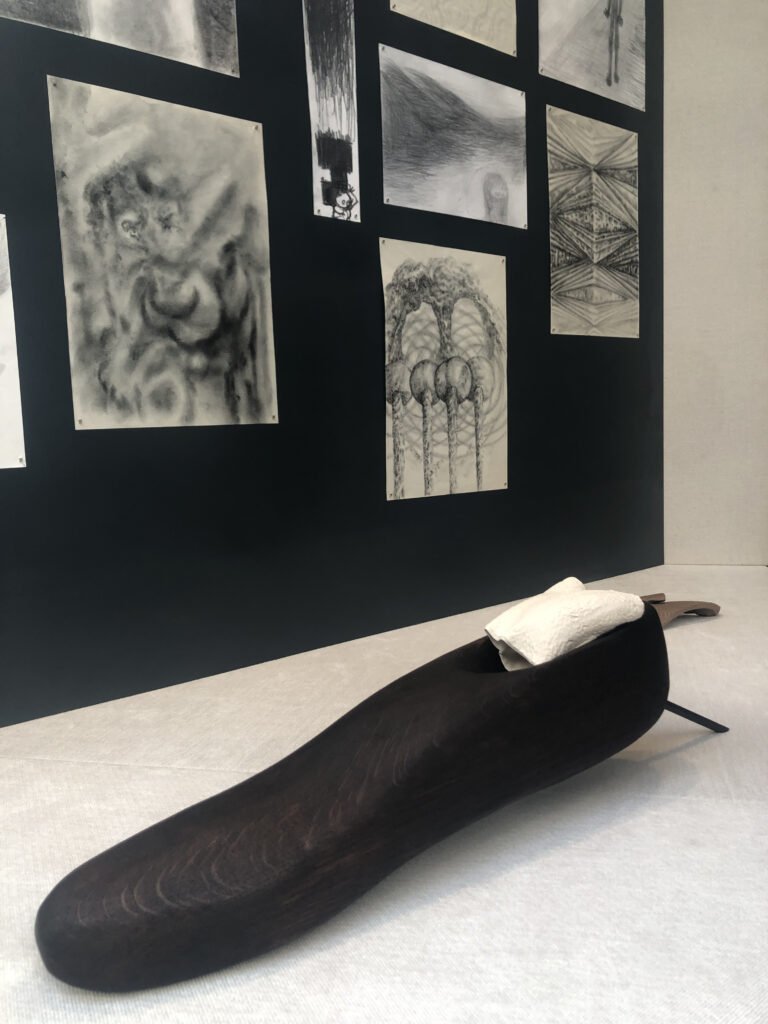
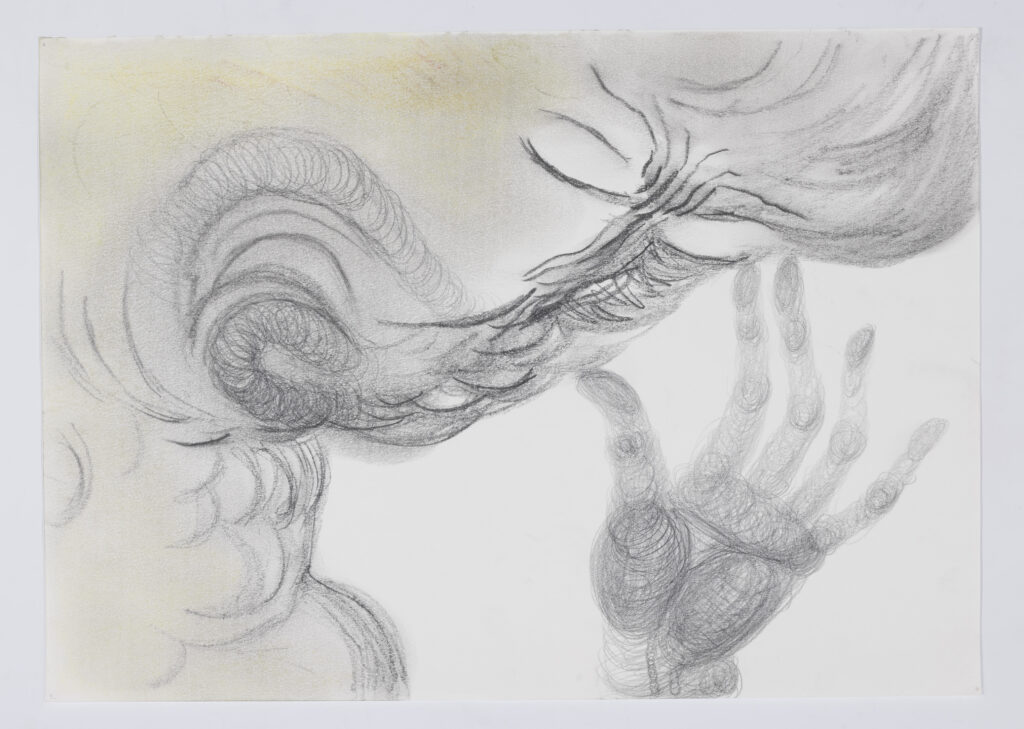
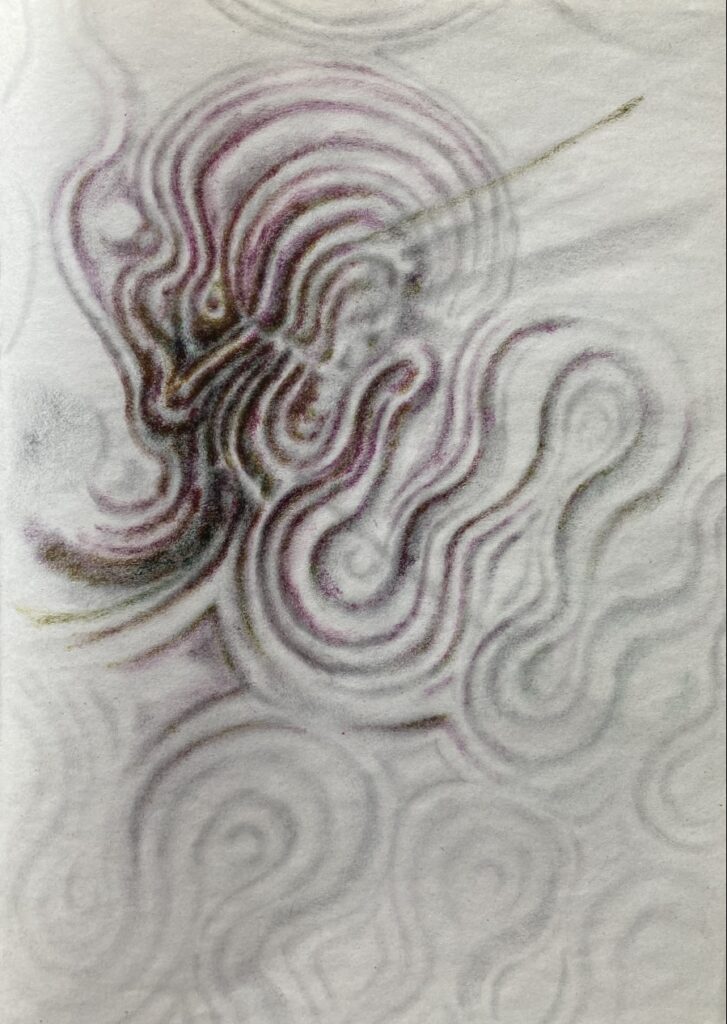
For this new exhibition, Abraham & Wolff is delighted to present a selection of drawings by Miriam Cahn and Bruno Botella, as well as four new sculptures by Katinka Bock.
Inspired by feminist and protest struggles, Miriam Cahn’s work draws its energy from the anger and indignation felt in the face of violence and injustice. Like her paintings, her drawings are haunted by themes of sex, power and war. The representation of the body as a site for the exercise of power plays a central role.
Bruno Botella’s drawings are a continuation of the plastic and sensory experiments through which the artist has attempted to capture the imprint of a psychic activity in a sculpted object. The artist lets his calligraphy brush run as freely as possible, in order to bring out, in his own words, an “unexpected and strange image like a hallucination”.
Whether in ceramic, wood, bronze or metal, Katinka Bock’s sculptures are often the result of simple gestures, directly visible in their form: folding, pressing, dropping, printing, rolling up, balancing. The sculpture entitled C’est la taille qui compte (It’s the size that counts) consists of a piece of carved and shaped wood, one side of which is balanced on a metal rod. At one end, the wood has a hollow in which a folded white ceramic form is nestled.
Bruno Botella – Aaah?! On ne s’évade pas de Backwards Rock ?!! …

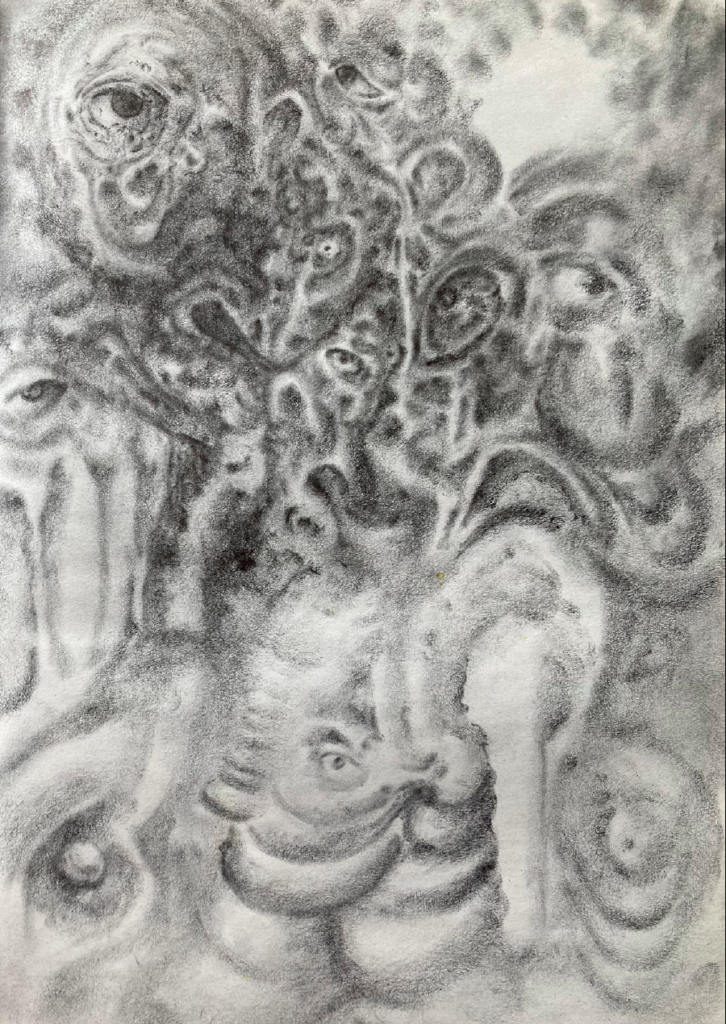
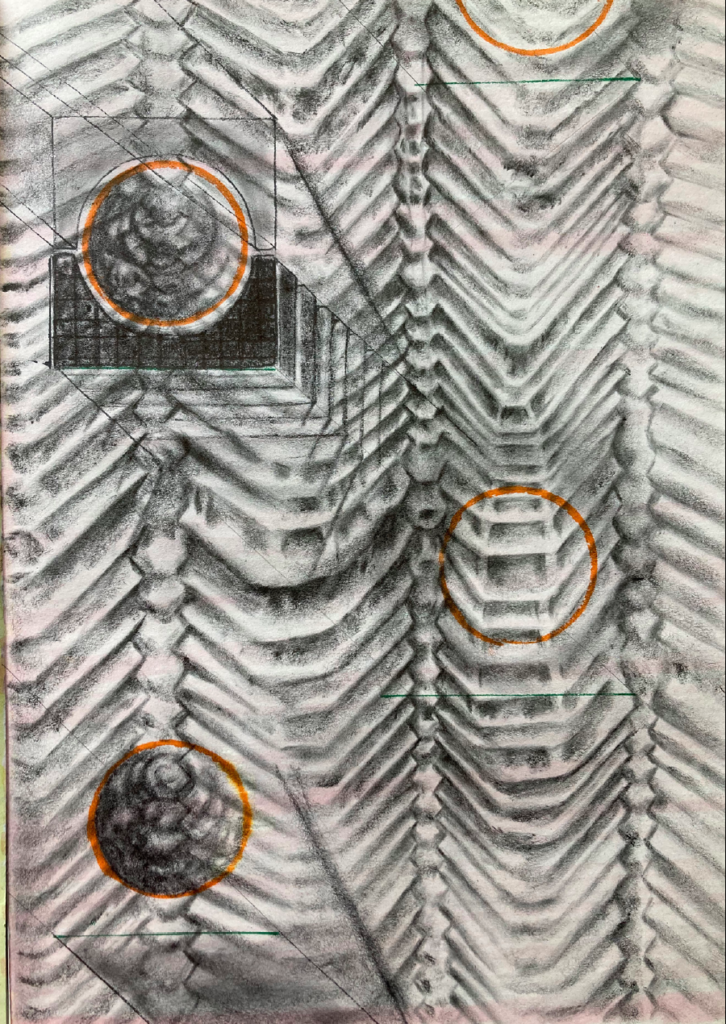
Bruno Botella is the author of an experimental work that is characterised by a creative process that is free from the suggestions of consciousness. Seeking to disengage himself from himself and from all artistic activity, the artist develops devices that aim to take the imprint of a psychic activity in a sculpted object. He works with his arms immersed in boxes that make his gesture invisible, sometimes sculpting unusual materials such as anaesthetic clay or qotrob, a hallucinogenic modelling paste of his own invention. As a mirror to these plastic and sensory experiments, Botella maintains a drawing practice whose research goes back to the first cartoons he produced after graduating from the Beaux-Arts in Paris. With this new series, produced in Kyoto where he now lives, he strives to make his gesture as free as possible, letting his calligraphy brush run over the paper to bring out, in his words, “an unexpected and strange image like a hallucination”.
Imre Pán & Aurelie Nemours, Correspondences
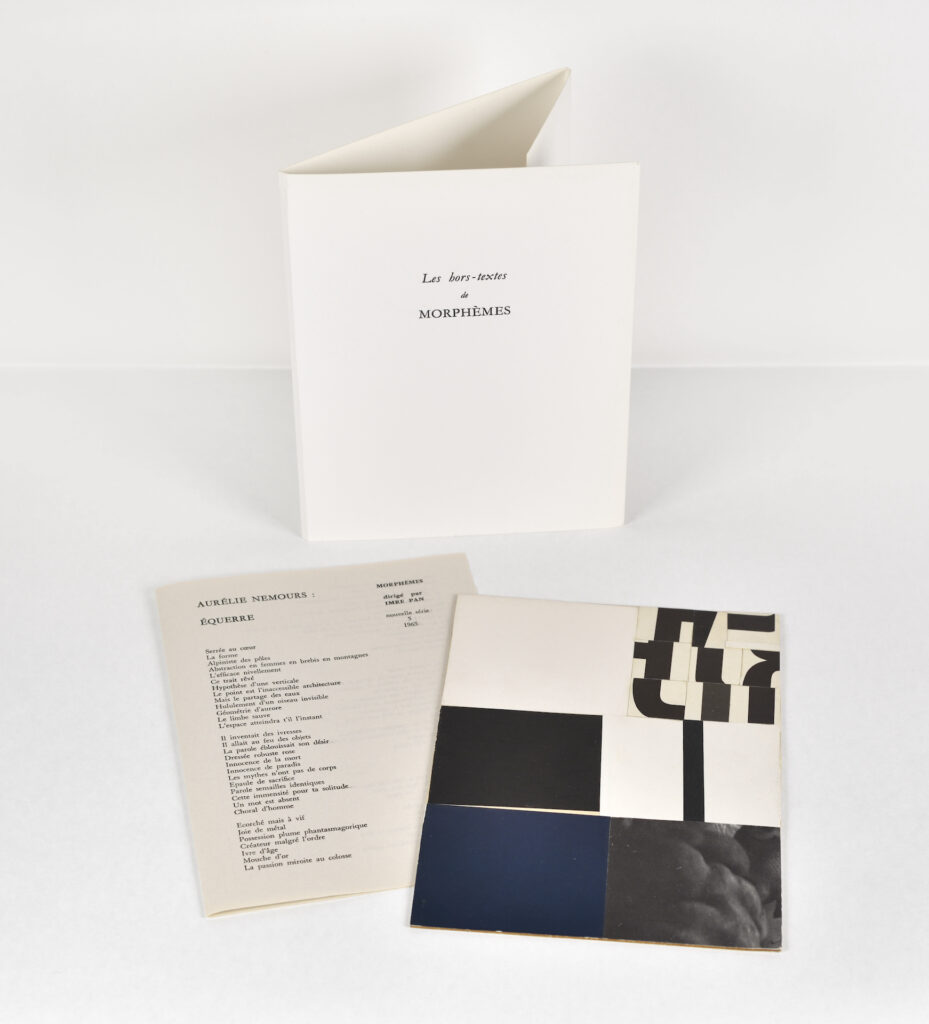
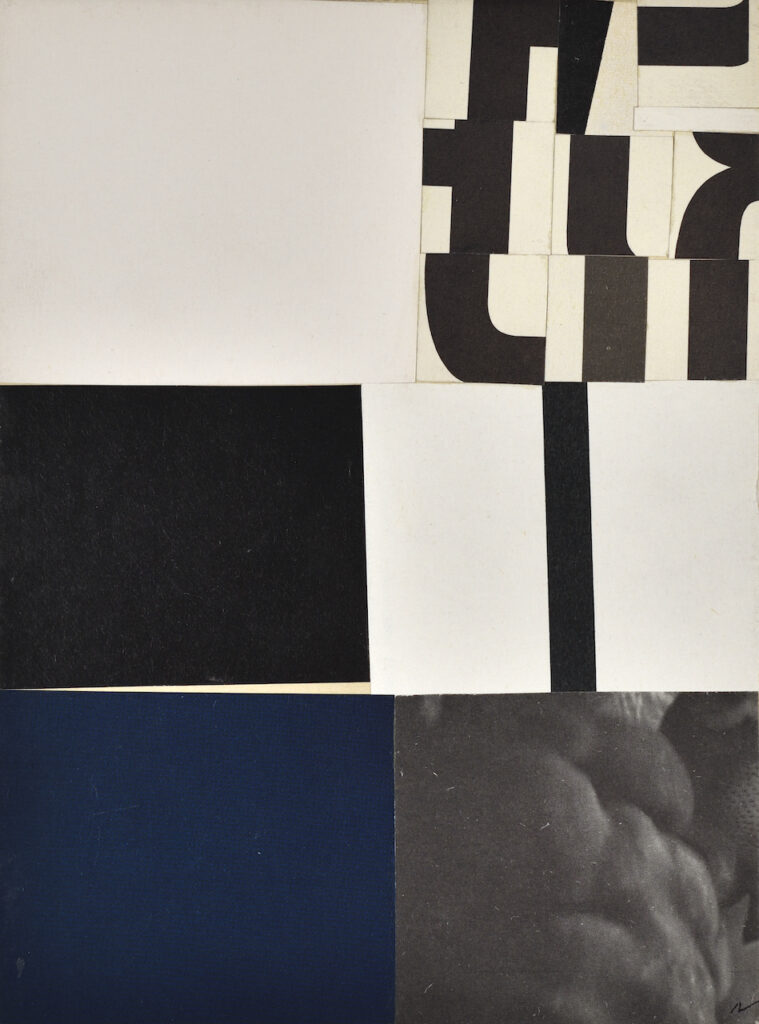
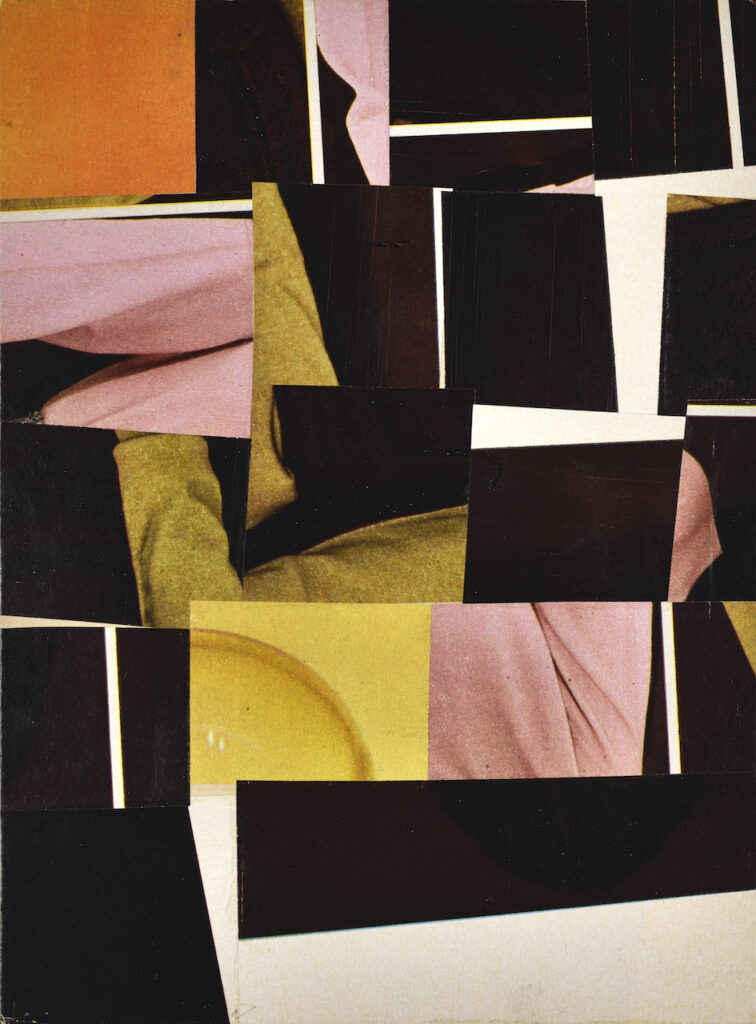
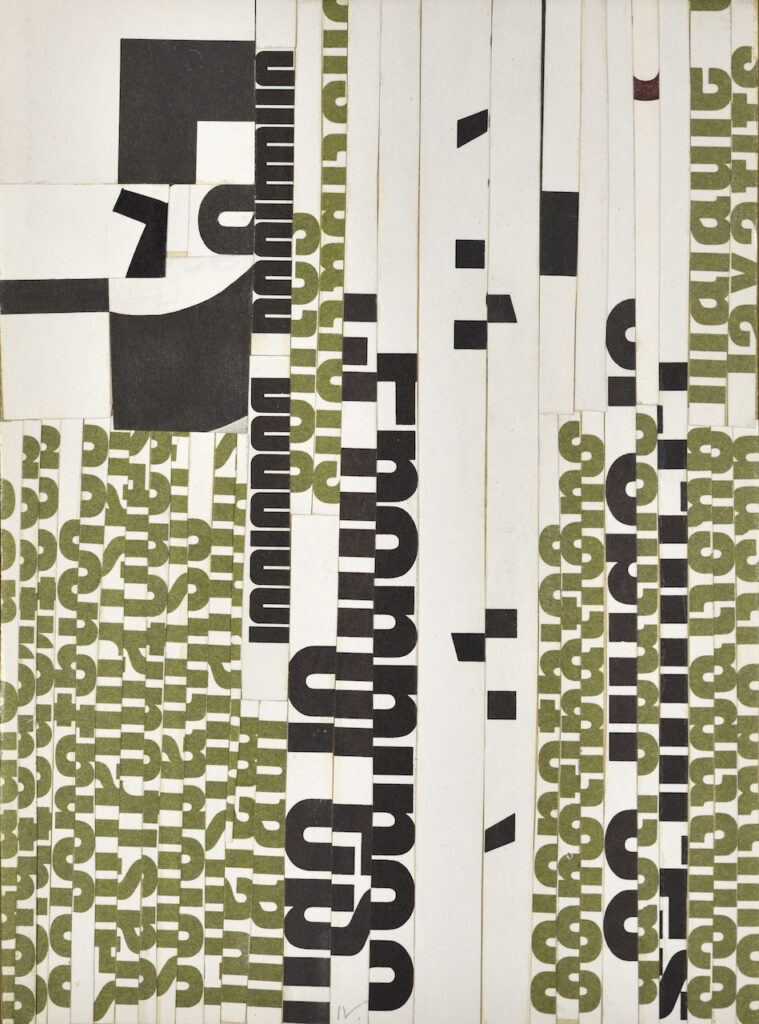
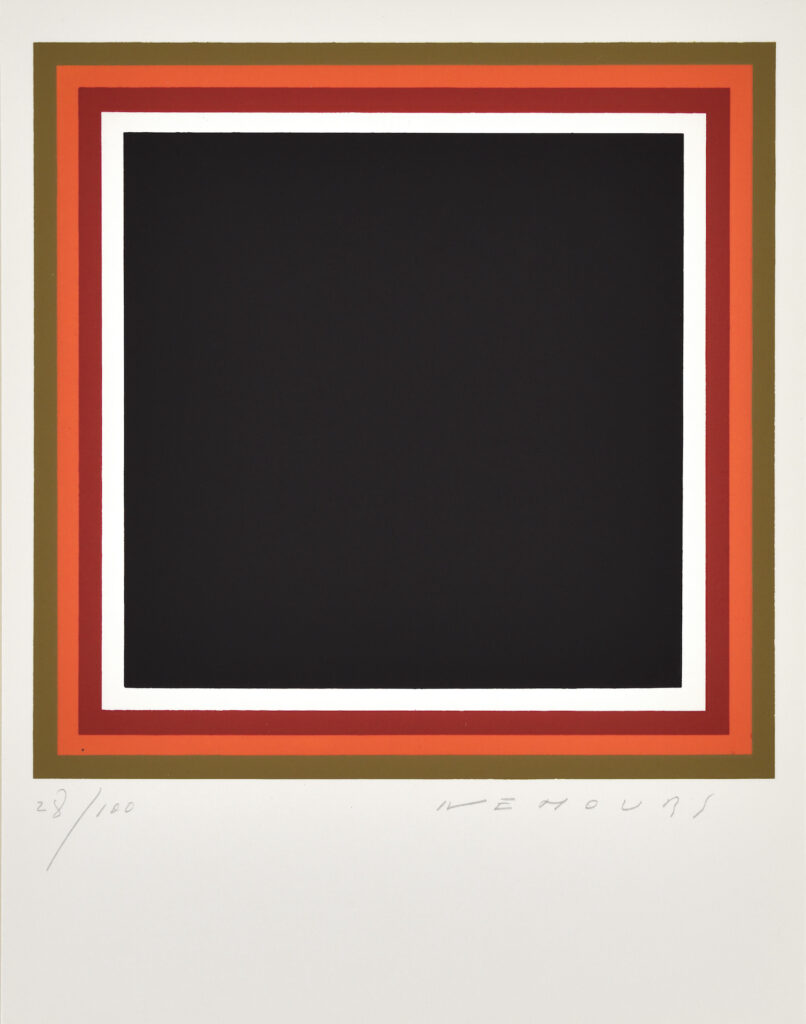
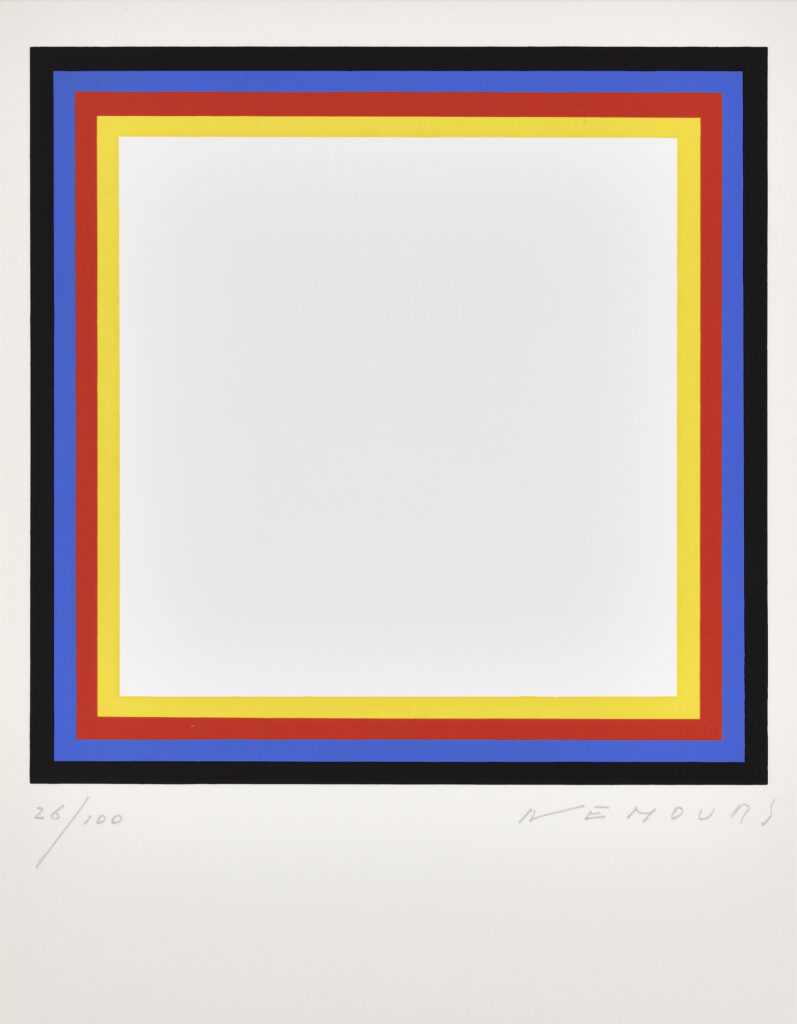
Aurelie Nemours’ collages are a surprise. Visual. Plastic. Poetic. For those who are used to, a little absent-mindedly, to the artist’s geometric works of line – horizontal, vertical – and point, to her black and white as rigorous as they are sensual, to her vibrant flat tints of monochrome colours, to the deep, velvety emptiness of a repeated infinity that she deploys from series to series, her collages from 1965 and 1968, made at the request of Imre Pan for the editions he tirelessly designed, interwoven, rhizomatic, fragmented, and whose titles he constantly repeated (Signe, Signe Morphèmes, Signe L’art du dessin, L’estampe moderne, Morphèmes, Mini-Musée, Préverbes. …), prove, upon discovery, to be sets of a singular unity and, above all, a fruitful step aside for the artist.
When they are revealed from their silk paper where they were scrupulously protected from natural light, from the dust of time, from possible tears or folds, When they were detached from their envelope of soft, matt Arches vellum cardboard paper, which married them to one of the copies of the magazine Morphèmes, more precisely number 5 dated 1965, and to the artist’s poem “Équerre”, it was a dazzling shimmer of broad flat tints or cut strips, a modulation of obliques, an undulation of blue, green, red, yellow, a dance or rather a choreography so little austere of typographical letters playing of the fragment and the hidden, coming from an ordinary magazine paper of the modern and consumer society of the beginning of the Sixties which opened to new artistic avant-gardes not disdaining to rediscover the technique of the collage and the wallpapers. Thus Pop Art. If Aurelie Nemours’ highly original collages are a surprise, or if they are always an astonishment, they were not unknown to the work of the artist of Rythme du millimètre or Structure du silence… at least forgotten works that Serge Lemoine and Marianne Le Pomméré brought back to the forefront of an exhibition and catalogue in 2001, at the Musée de Grenoble, in Aurelie Nemours. Pastels. Gouaches. Collages.
But oblivion still threatens them, twenty years later…
To bring them back, today, in 2023, in the window of the Abraham & Wolff gallery, in a discreet and modest presentation, attentive both to what they are as a unique plastic work and as part of an edition uniting poetry and visual form, an edition that dissolves the arbitrary boundaries between the literary and the visual arts, is to bring back to light one of the richest and most sensitive examples of collaboration between an art critic-poet and an artist-poet. And through this “association”, which takes the form of an editorial publication – the great project or work of Imre Pan in his Parisian years – Aurelie Nemours joins artist friends like Marcelle Cahn, artists – from whom she is undoubtedly more distant – supported and tirelessly exhibited, shown by Imre Pan since his installation in Paris, such as Étienne Hadju, Victor Vasarely, Geneviève Asse, Corneille, Roberto Matta, André Marfaing, Christine Boumeester, René Bertholo, Sonia Delaunay, Jacques Doucet, Arpad Szenes, Ida Karskaya, and, a little later, Lourdes Castro, Milvia Maglione, Colette Brunschwig…
Imre Pan, who, from 1960 onwards, created these small or medium-sized editions, with limited editions, published in the form of a printed booklet composed of a critical text of which he was the author or an artist’s poem, as for Aurelie Nemours, and accompanied by an original work of art (etching, drawing, watercolour, gouache, pastel, collage), is part of the genealogy of this synchretism of the arts of the first avant-gardes of modernity at the beginning of the 20th century. Pan perpetuates it, maintains it, renews it and updates it throughout the 1960s, a decade that invented and questioned other possible uses of materials and new formal languages in which the written word and the letter redraw surfaces, give rhythm to white spaces and typography, and in which experimental artistic groups in Brazil, the United States, France, Italy and Portugal developed visual, concrete and sound poetry. Although Aurelie Nemours’ collages are rooted in the cubist lineage of Kurt Schwitters, for example, they must be seen in the light of new contemporary poetic and musical forms, and of this renewed practice of collage.
Aurelie Nemours and Imre Pan met in 1963. Their collaboration extended throughout the decade. It began with the publication of a poem by the artist in the first issue of the magazine Morphèmes (January-February 1963):
“The grass
The breath
The voluptuous flights
The secret trills
The song
The watermarked star for morning
Of Glory
Unusual the truth of this martyr
In our memory of innocence”.
The second issue of the magazine (March-April 1963) – which is accompanied by an etching by Geneviève Asse – welcomes a new poem by Aurelie Nemours:
“The trace
The lightning
The Instant
The given space of charity
The imponderability
The face”.
In 1965 or 1964, therefore, Imre Pan invited Aurelie Nemours to make a set of twenty collages which were published in the number 5 of Feuillets de Morphèmes or Hors texte de Morphèmes dated 1965. The artist composed a new poem, “Équerre”, a sort of response to these works, which were new to her practice, and some agree that she attached little importance to them. Should we listen to Aurelie Nemours? The unity and singularity of the whole, which was completed in 1968 by the creation of a new series of twenty numbered and signed collages, again at the request of Imre Pan, suggest that there was less indifference on the part of Aurelie Nemours than aesthetic and meditative experimentation.
The 1968 collages were never published in the edition that Imre Pan probably intended. They are also characterised by a visual unity close to the fragmented musical score, the artist exploring more the twists and cuts of the word, of its sign-unit, the letter. It is undoubtedly in the unusualness of these collages, which have remained isolated from their publication, that the echoes of a concrete and sound poetry in the very silence of the gaps in the white, in the sinuous rhythms of unexpected typographic cuts, and inventive of a new plasticity of the word-matter and its detached form, are manifested with the greatest impact.
To look at Aurelie Nemours’ collages is to mobilise the mobile and the meditative, the movement and the energy of space; it is to turn towards the contemporary of the fragment and the cut-out, the caesura and the spread, particularly if one remains attentive to the pieces of 1968. If the question is: are Aurelie Nemours’ collages poems? The affirmative is the answer.
Marjorie Micucci, April 2023
Laura Lamiel
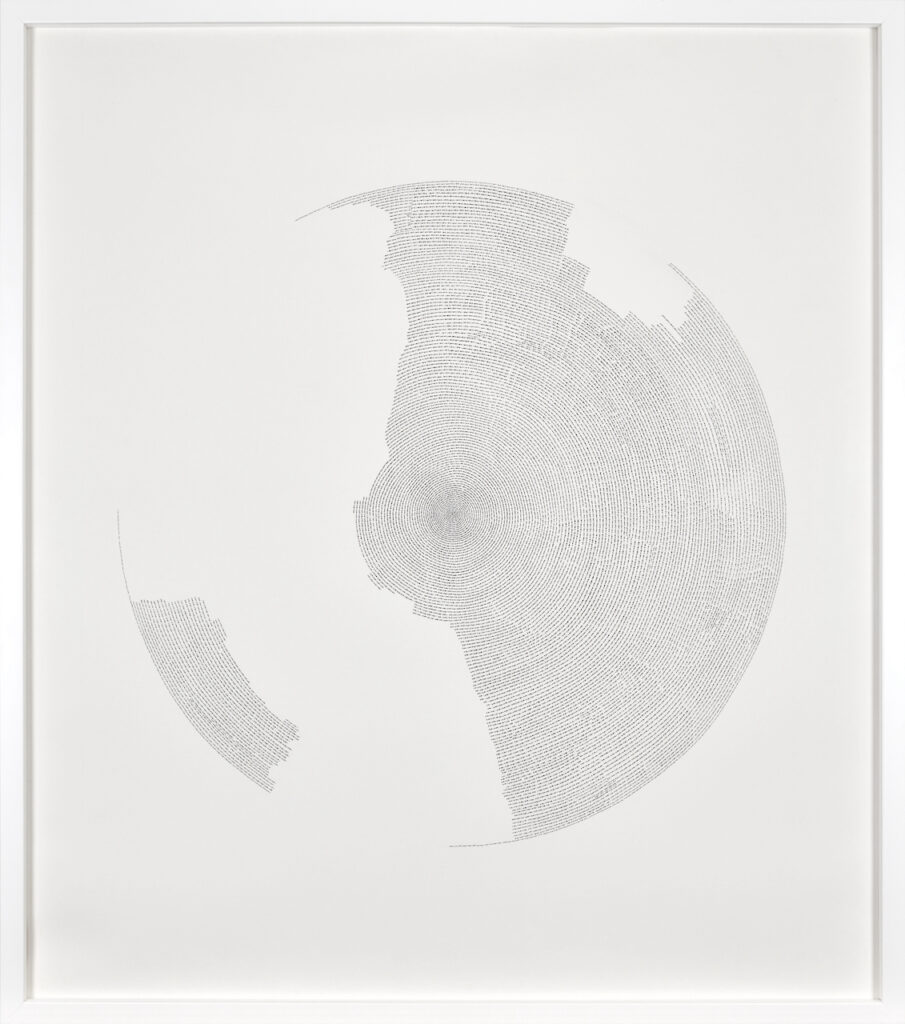
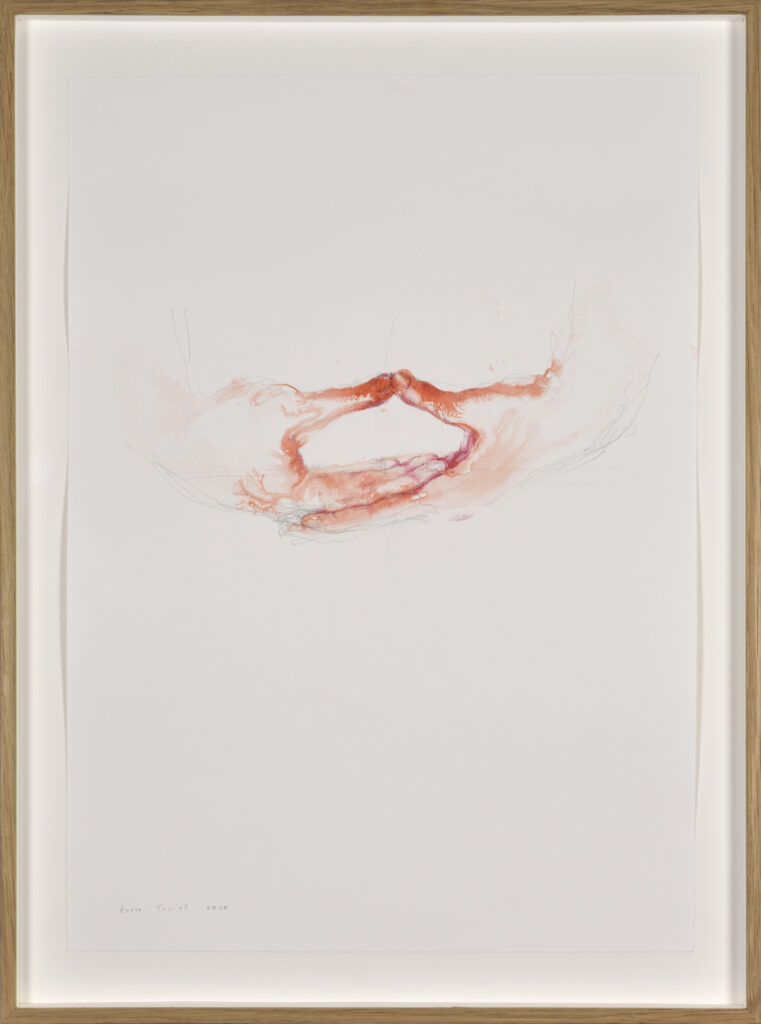
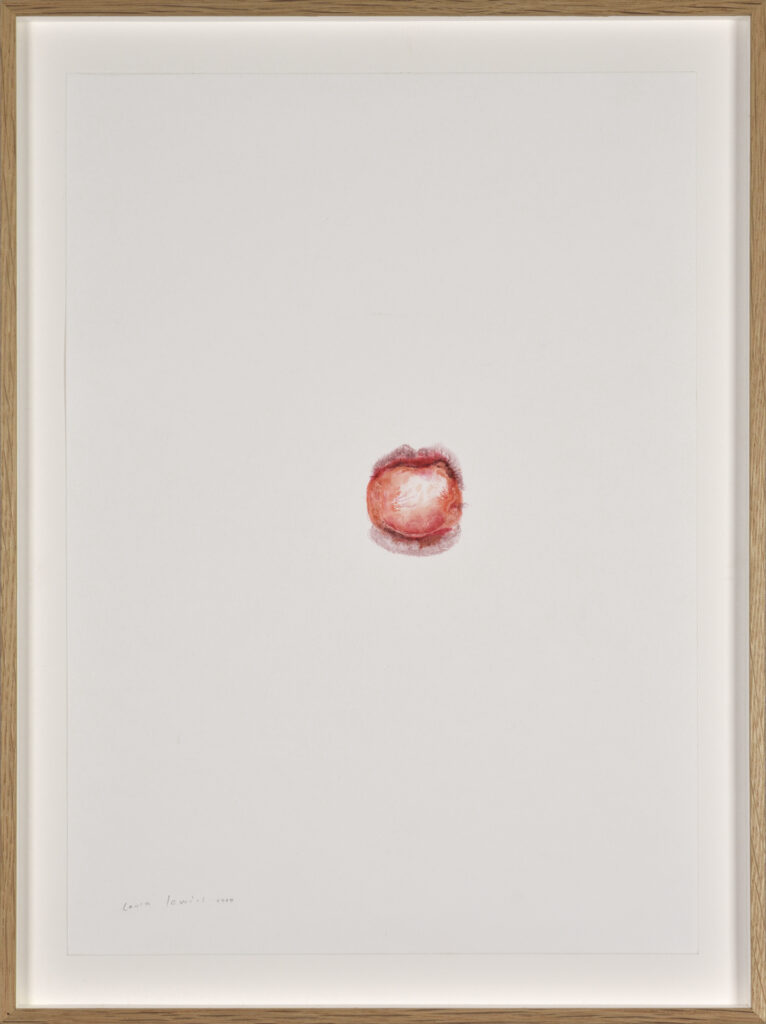
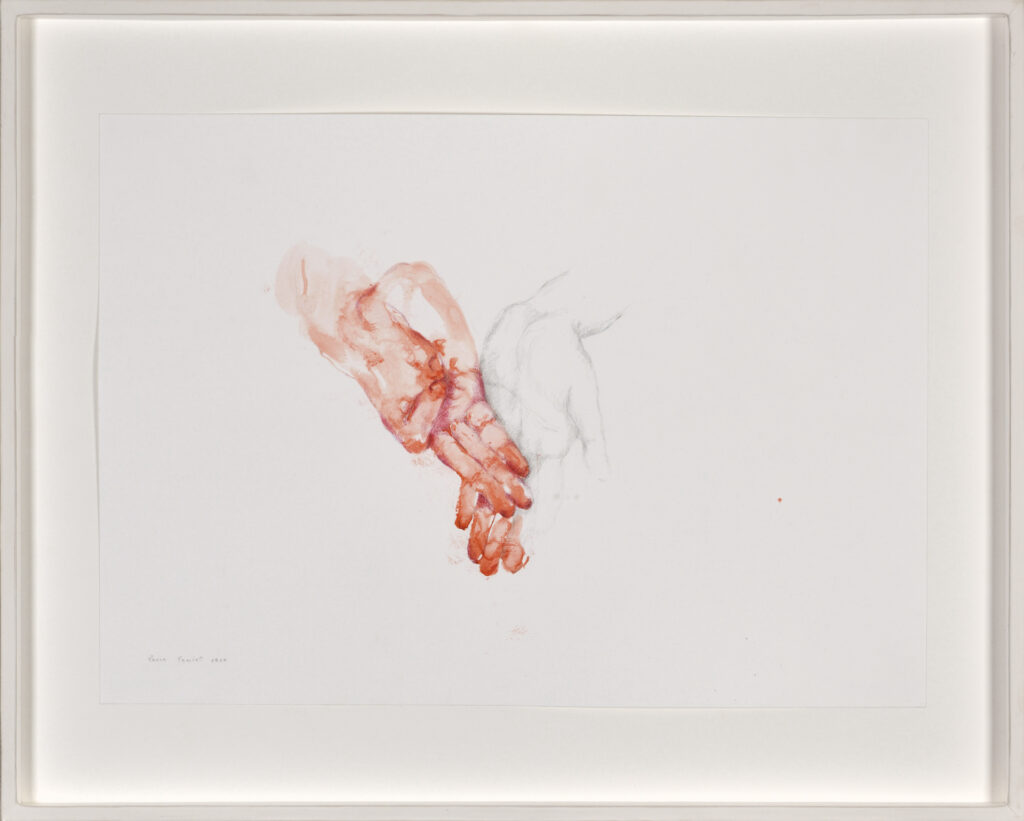
Known primarily for her installations, Laura Lamiel (b. 1948) has maintained a practice of drawing throughout her career.
In 2018, the development of an installation entitled Forclose was an opportunity for the artist to elaborate motifs, the production of which she describes as follows: “I decided to unfold this piece (Forclose) and I started to make drawings that took on their own. I made them, for several months, late at night. I had the energy, but I had to wait for it to arrive, I had to have the right gesture. I prepare the inks and the papers, and then there comes a moment in the night when it’s right, I can go, and it can last two or three hours. I started to draw a whole vocabulary of languages; I rushed around on sheets of paper, smearing them (…), opening my mouth, making heads, rhizomes, plants come out.” (Interview with François Piron, in LL, Paris, Paraguay Press, 2019). Continued during the confinement of 2020, this series entitled Intimate Territories is also composed of lungs, hands or faces caught in interlacing lines. Although impulsive and imbued with a violence underlined by red inks evoking the energy of blood, the whole gives off an impression of fragility and serenity.
The artist had already practised this asceticism of work before, in a series of large circular drawings in the form of myriad pen strokes ritually aligned to form concentric circles. Titled 3 years, 3 months, 3 days, in reference to the traditional length of the retreat that aspiring lamas must make in Tibetan Buddhism, these drawings are akin to spiritual exercises based on repetition. The one we are exhibiting is thus composed of the repetition of the syllable “om”, in reference to the Buddhist mantra Om mani padme hum, whose sacred syllables should lead the reciter towards enlightenment. It is accompanied by three drawings from the series Territoires Intimes.
These works by Laura Lamiel are exhibited in collaboration with the Marcelle Alix gallery (Paris).
